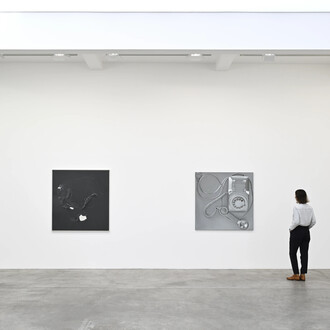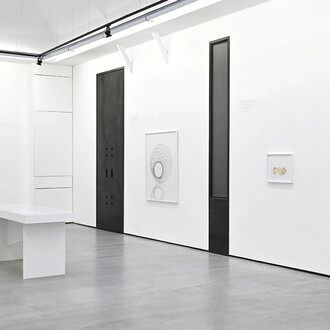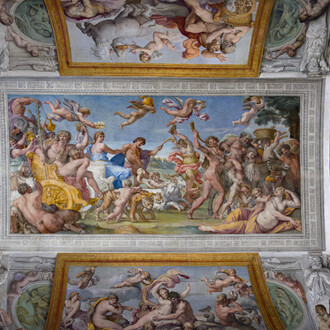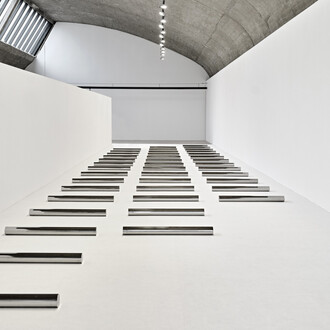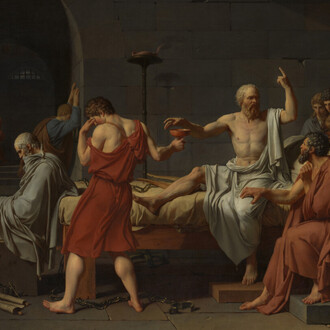I was always attracted to stories that had something to say about life. The consequence of that was that I tried to look for directors and stories that really made sense for me, that really enriched my life too, that got me thinking about what life was about.
(Robby Müller)
Marian Goodman Gallery is pleased to announce the first solo exhibition of Robby Müller in Paris. Known as one of the most influential directors of photography, Robby Müller (1940-2018) was also a prolific photographer. The show at the gallery’s 66 rue du Temple space includes a selection of photographs chosen from his exceptional archive of over 2,000 Polaroids. His pictures, often taken in his time off while working on films, many directed by Wim Wenders and Jim Jarmusch between the early 1970s and the late 1990s, were, at first, not intended to be displayed. These intimate, personal snapshots, captured in moments of solitude, contextualize the world through his eyes. As a cinematographer, Müller chose to work with film directors who had something to say about life; his Polaroids bear witness to his humble and poetic outlook on life.
The original Polaroids and prints on display show an amalgamation of cinematic still lifes, landscapes, cityscapes as well as interior views, mainly shot in different cities in the United States. From neon signage on a motel in Santa Fe, street lamps in Los Angeles, the play of shadows on a wall in Memphis to the illuminated Eiffel Tower in Paris, these eclectic images interpret varying degrees of luminosity. In an essay written about his Polaroids, Bianca Stigter notes:
Robby Müller is often compared to Vermeer, because they are both Dutch and because they both handle light in a reverent way. They do not use light to convey a scene; they use a scene to convey the light. Light is not what makes things visible; things are what makes light visible. The Polaroids, especially as seen in series, are preoccupied with light, how it shines through a curtain or a shirt, how daylight gives over to artificial light, how light can have color and give color, how different light sources compete and fade.
While working on long-feature films, Müller spent months on the road, sleeping in hotel rooms where he observed reflections on mirrors, windows, or TV screens, noticing the particularities of light cast from a table lamp, and discerning the sun’s rays descending on a coffee maker or piercing through shutters. As Bianca Stigter tells it:
It is possible to see a picture of a hotel room and not think of hotel rooms, especially if that picture is taken by Robby Müller, cinematographer extraordinaire, who manages to do away with the useful categories children spend a lifetime learning only later to find solace when they do not apply, to see walls and faces just as things for the light to play upon. Sartre’s protagonist in Nausea felt disgust confronted by familiar things he suddenly could not name, but in the works of Robby Müller, it becomes a liberation. There is freedom in this ignorance, like a precious gift; in a world where everything is weighed down by meaning the sudden absence is strange and exhilarating.
Robby Müller (Curaçao, 1940 – Amsterdam, 2018) was a cinematographer and a photographer. Throughout his fifty-year-long artistic career as a cinematographer, Müller collaborated with the most talented and renowned film directors such as Wim Wenders, Jim Jarmusch, Barbet Schroeder, Andrzej Wajda, Lars von Trier, and Raoul Ruiz. The more than 60 feature films he worked on include: The American Friend (1977) and Paris, Texas (1984) by Wim Wenders; Down by Law (1986), Mystery Train (1989) and Ghost Dog: The Way of the Samurai (1999) by Jim Jarmusch; Breaking the Waves (1996) and Dancer in the Dark (2000) by Lars von Trier. In 2002 he also filmed Carib’s Leap (2002) in collaboration with his long-time friend Steve McQueen on the Caribbean island of Grenada; Müller’s luminous footage subsequently also became a central part of McQueen’s Ashes (2002- 2015).
Robby Müller’s extensive archive of Polaroid photographs have been shown in several exhibitions since 2016: in the retrospective Robby Müller. Master of Light, at the Eye Filmmuseum, Amsterdam (2016) and the Deutsche Kinemathek in Berlin (2017); Like Sunlight Coming Through the Clouds, curated by Andrea Müller-Schirmer, in Arles (2019), at the International Film Festival of Rotterdam (2020). In remembrance of Robby Müller, the Netherlands Society of Cinematographers, the International Film Festival Rotterdam, and Andrea Müller-Schirmer established the annual Robby Müller Award in 2020. The exhibition has been organized in collaboration with Andrea Müller-Schirmer, founder of the Robby Müller Archive, and Annet Gelink Gallery.





